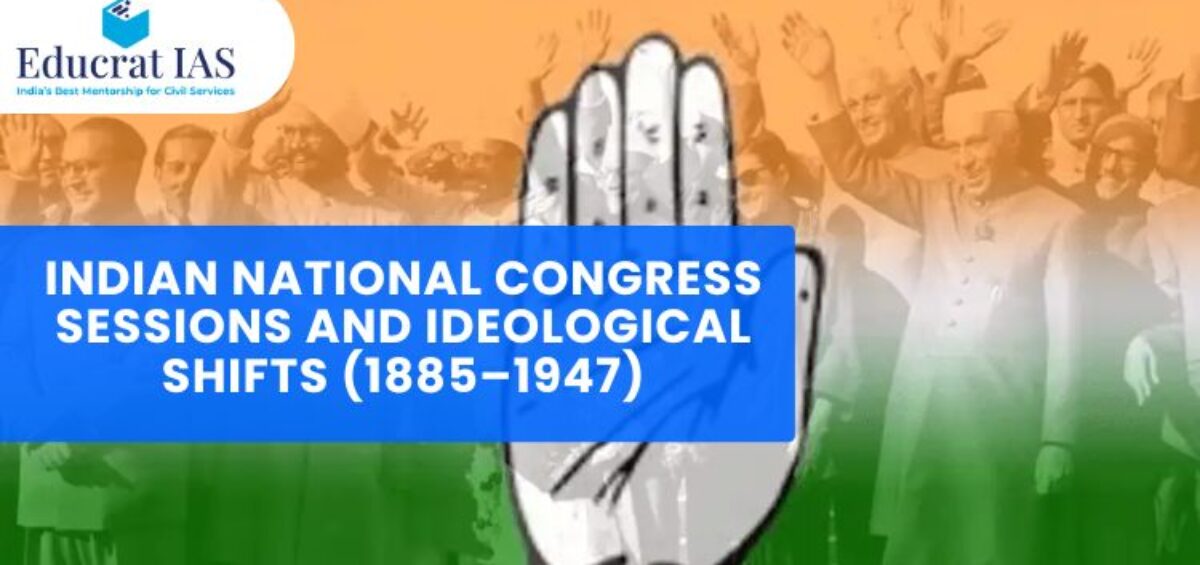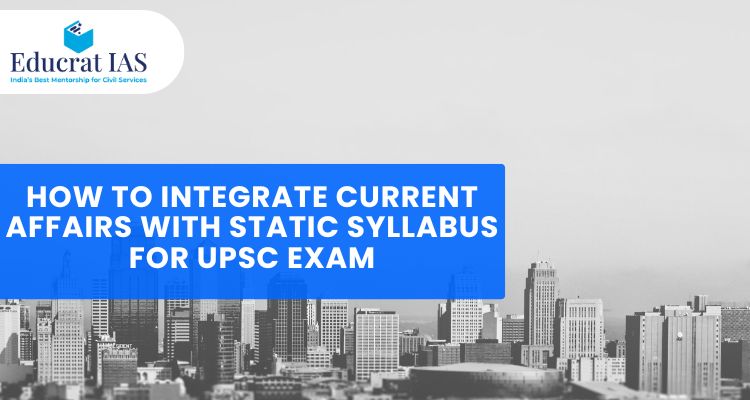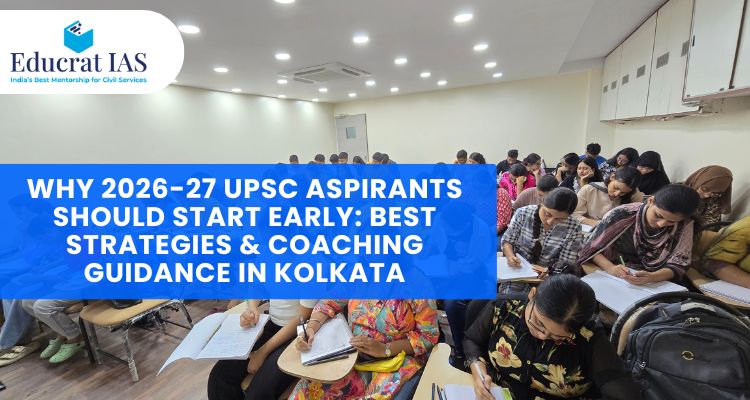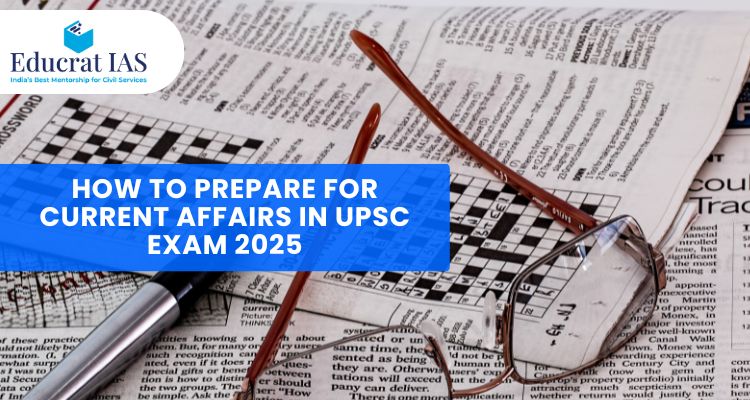The Indian National Congress (INC), founded in 1885, was at the forefront of India’s freedom struggle. Over the decades, it underwent significant ideological shifts — from moderate constitutionalism to mass civil disobedience — shaped by internal debates, changing leadership, and external political developments.
Understanding the timeline and ideology behind key INC sessions is essential for UPSC aspirants, especially for GS Paper I, Essay, and Modern History Optional.
1. Founding and the Moderate Phase (1885–1905)
Key Features:
- Faith in British liberalism and justice
- Emphasis on petitions, constitutional reforms, and public awareness
- Leadership from Western-educated elite
Notable Sessions:
- 1885 – Bombay Session: First INC session, presided by W.C. Bonnerjee
- 1889 – Bombay Session: Demand for simultaneous Indian Civil Services exam in India
- 1892 – Response to Indian Councils Act: Partial satisfaction but demand for greater representation
Ideological Position:
- Sought administrative reforms, not independence
- Relied on dialogue, not confrontation
2. Rise of Extremists and the Surat Split (1905–1919)
Trigger:
- Partition of Bengal (1905) created public outrage
- Rise of assertive leaders like Tilak, Lala Lajpat Rai, and Bipin Chandra Pal
Key Sessions:
- 1906 – Calcutta Session: Four-point demand including Swaraj (self-government)
- 1907 – Surat Session: Split between Moderates and Extremists
- 1916 – Lucknow Session: Reunion of Congress factions + Congress-Muslim League Pact
Ideological Shift:
- From reform to assertive nationalism
- Focus on boycott, swadeshi, and direct action
3. Gandhian Phase and Mass Movements (1920–1934)
With Gandhi’s entry, the Congress transitioned into a mass-based party.
Key Ideological Tools:
- Non-cooperation, civil disobedience, non-violence (ahimsa)
- Mobilisation of peasants, women, students, and rural masses
Notable Sessions:
- 1920 – Nagpur Session: Adoption of Non-Cooperation Movement
- 1929 – Lahore Session: Poorna Swaraj (complete independence) declared; 26 January 1930 marked as Independence Day
- 1931 – Karachi Session: Resolution on Fundamental Rights and Economic Policy
Outcomes:
- Popularisation of the freedom movement
- Introduction of socio-economic goals alongside political demands
4. Constitutional Negotiations and Final Phase (1935–1947)
Context:
- Response to Government of India Act, 1935
- Growth of internal divisions (especially over communal representation)
- Engagement with British proposals on constitutional reforms
Key Sessions:
- 1936 – Faizpur Session: First rural session; focus on agrarian issues
- 1937 – Election Participation: Congress formed ministries in 7 provinces
- 1940 – Ramgarh Session: Rejection of August Offer
- 1942 – Bombay Session: Launch of the Quit India Movement
- 1946 – Meerut Session: Congress agreed to participate in the Constituent Assembly
Final Position:
- Demand for complete independence
- Refusal to accept British proposals that compromised Indian unity or sovereignty
Timeline Summary of Key INC Sessions
| Year | Session | Significance |
|---|---|---|
| 1885 | Bombay | First INC session; moderate start |
| 1907 | Surat | Split between Moderates and Extremists |
| 1916 | Lucknow | Congress-League Pact; re-unity |
| 1920 | Nagpur | Non-Cooperation adopted |
| 1929 | Lahore | Poorna Swaraj declared |
| 1931 | Karachi | Fundamental Rights resolution |
| 1942 | Bombay | Quit India Movement launched |
Conclusion
From 1885 to 1947, the Indian National Congress evolved from a platform of polite constitutionalists to a powerful mass movement demanding complete independence. Each session reflected the prevailing political context and internal ideological developments.
Understanding these ideological transitions — from moderate reformism to mass mobilisation — is crucial for answering both direct and analytical questions in the UPSC exam.
FAQs – Indian National Congress Sessions (1885–1947)
Q1. Why is the 1929 Lahore Session important for UPSC?
It declared Poorna Swaraj as the goal of the freedom struggle and initiated the Civil Disobedience Movement.
Q2. What was the significance of the 1931 Karachi Session?
It passed a resolution on Fundamental Rights and Economic Policy, linking political freedom to socio-economic justice.
Q3. What led to the Surat Split in 1907?
Differences between Moderates and Extremists over the methods of agitation and control over party leadership.
Q4. When did INC participate in elections for the first time?
In 1937, under the provisions of the Government of India Act, 1935.
Need Help With Modern History for UPSC 2026?
Join our dedicated Modern History classes and answer-writing programs at 👉 Educrat IAS Academy – Kolkata
Dial Now: +91 91473 88921 For structured notes, test series, and mentorship tailored to the demands of UPSC Mains.
Follow us on our social media channels for the latest updates:
Telegram : Join our Telegram community for daily current affairs, free PDFs, and important UPSC updates. Instagram: Follow us on Instagram for quick tips, answer writing guidance, reels, and motivational posts. Facebok: Like our page to stay connected with webinars, UPSC trends, and student success stories. X : Follow us for crisp analysis of editorial opinions, government policies, and international affairs. Call us now at +91 9163228921 or visit educratias.com to start your UPSC journey with Kolkata’s most trusted institute! Don’t just scroll—engage, learn, and transform your preparation with Educrat IAS!






